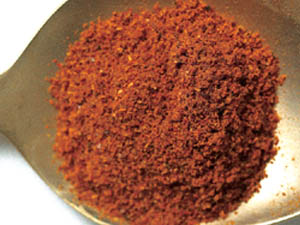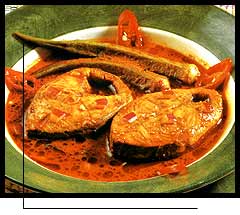
Food History
By 3000 B.C. turmeric, cardamom, pepper and mustard were harvested in India. The Harappans who occupied Harappa and Mohenjodero in the Indus Valley, were of mixed stock, somewhat larger in stature than either the Sumerians or Egyptians denying theories that they were an extension of those communities. They had club wheat, barley, sheep and goats from the Iranian Plateau and cotton from Southern Arabia or North East Africa but were held back by their reliance on flood waters due to general lack of knowledge of irrigation.
Sumer had trade links with the Indus Valley via Hindu Kush by 3000 B.C. and by sea from 2500 B.C., thus linking the Harappans with both Sumerians and Egyptians, where cumin, anise and cinnamon were used for embalming by 2500 B.C.
By 1750 B.C., the Harappan civilization had disappeared, probably due to floods and tectonic shifts, to be replaced by the Aryans who invaded via Hindu Kush by 1500 B.C. The Aryans had considerable contact with Babylon from whence the original flood legend arose to be adopted by both the Aryans and the Hebrews and several other civilizations.
In Britain the term ‘curry’ has come to mean almost any Indian dish, whilst most people from the [Indian] sub-continent would say it is not a word they use, but if they did it would mean a meat, vegetable or fish dish with spicy sauce and rice or bread.
The earliest known recipe for meat in spicy sauce with bread appeared on tablets found near Babylon in Mesopotamia, written in cuniform text as discovered by the Sumerians, and dated around 1700 B.C., probably as an offering to the god Marduk.
In Richard II’s reign (1377-1399) the first real English cookery book was written. Richard employed 200 cooks and they, plus others including philosophers, produced a work with 196 recipes in 1390 called ‘The Forme of Cury’. ‘Cury’ was the Old English word for cooking derived from the French ‘cuire’ - to cook, boil, grill - hence cuisine.

Many supporters of the Tamil word kari as the basis for curry, use the definition from the excellent Hobson-Jobson Anglo English Dictionary, first published in 1886. The book quotes a passage from the Mahavanso (c A.D. 477) which says “he partook of rice dressed in butter with its full accompaniment of curries.” The important thing, however, is the note that this is Turnour’s translation of the original Pali which used the word “supa” not the word curry. Indeed Hobson -Jobson even accepts that there is a possibility that “the kind of curry used by Europeans and Mohommedans is not of purely Indian origin, but has come down from the spiced cookery of medieval Europe and Western Asia.”
Food History





